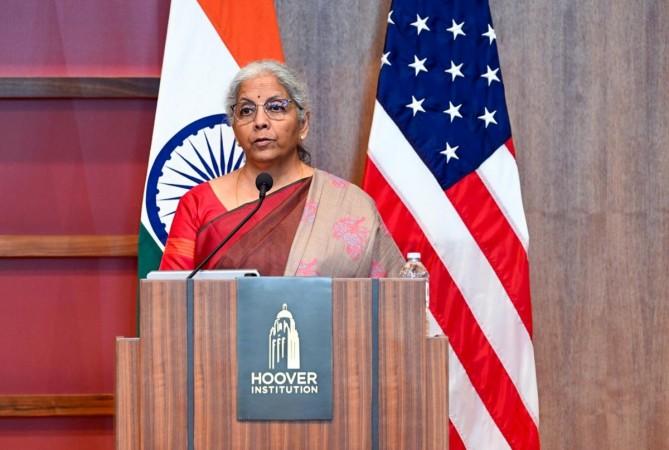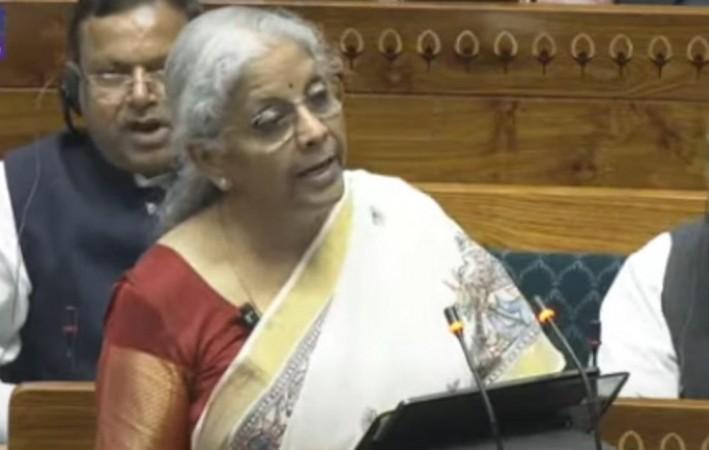
Finance Minister Nirmala Sitharaman has introduced the Insolvency and Bankruptcy Code (IBC) Amendment Bill, 2025, in the Lok Sabha, marking a significant step towards reforming India's insolvency framework. The bill, which has been referred to a select committee for further review, aims to address critical issues such as group insolvency, cross-border insolvency, and a creditor-led resolution process. These reforms are designed to streamline the insolvency process, reduce delays, and maximize value for stakeholders.
The current IBC mandates that insolvency applications be admitted within 14 days. However, the average time taken for admission has exceeded 434 days, leading to substantial value loss for corporate debtors. To tackle this issue, the bill proposes changes to Section 7, ensuring that applications by financial creditors are admitted if a default exists, without considering other grounds. This amendment is expected to expedite the process and reduce the time taken for admitting financial debt-related applications.
The bill's statement of objects and reasons highlights its goals: reducing delays, maximizing stakeholder value, and improving governance under the Code. "The proposed amendments aim to reduce delays, maximise value for all stakeholders, and improve governance of all processes under the Code," the statement noted. The Finance Minister emphasized the necessity of amending certain provisions and introducing new ones to ensure effective implementation.
Key Features of the Amendment Bill
One of the bill's notable features is the introduction of a 'creditor-oriented insolvency resolution process' (COIRP). This out-of-court mechanism is designed to facilitate faster and more cost-effective insolvency resolution for genuine business failures, minimizing business disruption. The approach is expected to ease the burden on judicial systems, promote ease of doing business, and improve access to credit.
The group insolvency framework is another significant addition, aimed at efficiently resolving insolvencies involving complex corporate group structures. By minimizing value destruction caused by fragmented proceedings and maximizing value for creditors through coordinated decision-making, this framework seeks to enhance the overall efficiency of the insolvency process. Additionally, the cross-border insolvency framework aims to protect stakeholder interests in both domestic and foreign proceedings, promoting investor confidence and aligning domestic practices with international best practices.
"This will also pave the way for improved recognition of Indian insolvency proceedings in other jurisdictions," the statement said.

The bill also proposes new sub-sections (1A) and (1B) to Section 33 of the IBC, allowing for the restoration of the corporate insolvency resolution process in exceptional cases, provided that the committee of creditors makes such a request by an application. This provision has been added to avoid a repeat of the JSW Steel-BPSL May 2 judgement of the Supreme Court, which had earlier cancelled JSW Steel's acquisition of Bhushan Power and Steel Ltd. The judgement was later recalled, and the matter was reheard. The Supreme Court concluded the re-hearing on the case on Monday and has reserved its verdict on the same.
Implications and Industry Reactions
The bill also addresses the inclusion of liquidator and interim resolution professional (IRP) assignments alongside resolution professional (RP) assignments within the existing 10-assignment limit, ensuring a more equitable distribution of work. Ashutosh Narang, partner at CMS INDUSLAW, emphasized the need for fairness across the ecosystem, suggesting that similar safeguards should be considered for insolvency professional entities (IPEs) to avoid concentration of cases in a few entities.
The IBC, introduced in 2016, provides for a market-linked and time-bound resolution of stressed assets. Since its enactment, it has undergone several legislative interventions, with the last amendment made in 2021. The proposed changes in the 2025 amendment bill aim to facilitate faster admission, resolution, and liquidation processes, maximize asset value, and improve governance. "Once implemented, this will help ease the burden on judicial systems, promote ease of doing business and improve access to credit," Sitharaman said.
The introduction of the IBC Amendment Bill, 2025, has sparked discussions and debates within the Parliament. During the Monsoon Session, Bharatiya Janata Party MP Jagdambika Pal urged the maintenance of decorum in the Lok Sabha, criticizing Deputy Leader of Opposition Gaurav Gogoi's behavior.
"There is a certain decorum of Lok Sabha, of the Parliament...For the first time, I saw that Deputy Leader of Congress Gaurav Gogoi picked up papers, handed them over to MPs and told them to tear them up," said Jagdambika Pal. These comments followed the introduction of the Insolvency and Bankruptcy Code (Amendment) Bill, 2025, in the Lok Sabha.
"The proposed amendments provide the much needed clarity on treatment of PUFE proceedings and the resultant assets. The statutory aim appears to be to build-in certainties of recovery, and flexibilities in disposal methods, of assets – both at the corporate debtor level and at those of the guarantors (subject to certain conditions). Ability to efficiently monetise assets will enhance creditor and stakeholder recoveries. On the demand side, buyers will naturally be encouraged to offer price commensurate with the economic value of assets, without having to account for legal and regulatory risks associated with such acquisitions," Soumitra Majumdar, Partner at JSA Advocates & Solicitors, told IBT.
Future Prospects and Economic Context
The bill's introduction comes at a time when India continues to be the world's fastest-growing major economy. As highlighted in Fortune India's latest edition, the nation's Top 100 Billionaires list reflects a slight decline in the number of dollar billionaires, even as the entry threshold for the Top 100 rose. This economic backdrop underscores the importance of a robust insolvency framework to support sustainable growth and investor confidence.
Dhananjay Kumar, Partner at Cyril Amarchand Mangaldas, commented on the introduction of regimes for group insolvency and cross-border insolvency, stating, "The introduction of regimes for group insolvency and cross-border insolvency are welcome. The need for group insolvency was felt in many cases. Similarly, the lack of a cross-border insolvency regime had tied the hands of many stakeholders and affected recoveries. The flexibility retained by the Government to designate special benches for cross-border cases is fit-for-purpose."
Alay Razvi, Managing Partner at Accord Juris, noted that while these reforms promise to reduce delays and strengthen India's business environment, concerns remain over enforcement complexities, judicial bottlenecks, and the need to balance creditor power with robust protections for operational creditors to ensure equitable and truly effective resolutions.
Related










![PM Modi's 2025 in frames: From Op Sindoor to Ram Mandir Dhwajarohan [Photos]](https://data1.ibtimes.co.in/en/full/826530/pm-modis-2025-frames-op-sindoor-ram-mandir-dhwajarohan-photos.jpg?w=220&h=138)






